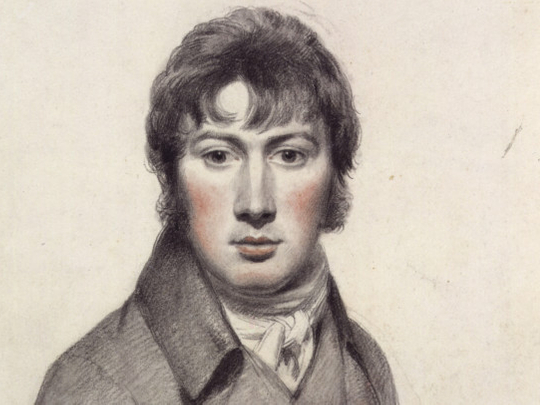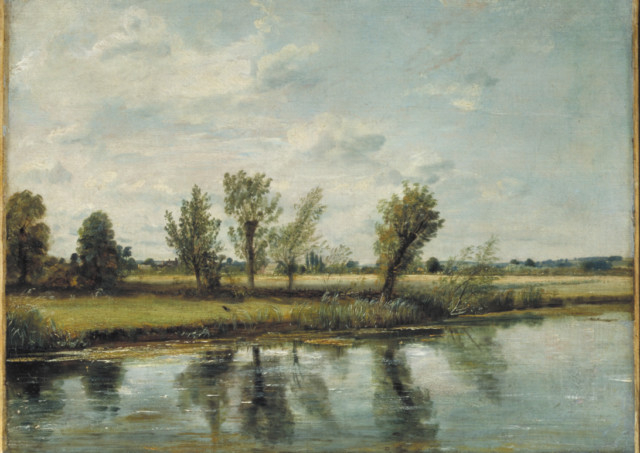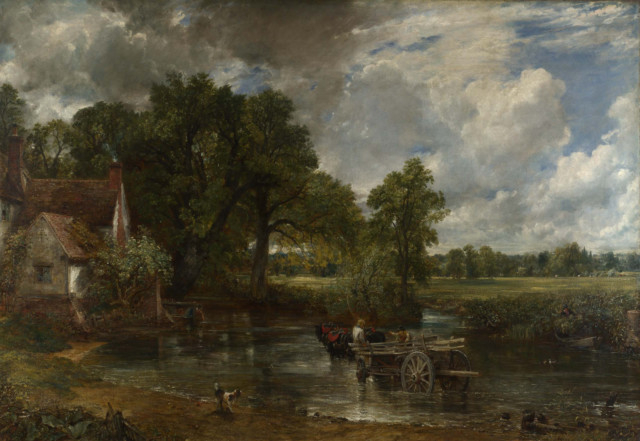
Setting out to delineate “the dews — breezes — bloom and freshness, not one of which has yet been perfected on the canvas of any painter in the world”, John Constable became the model of an English artist: empirical, direct, attuned to landscape, weather, seasons.
“My limited and restricted art may be found under every hedge,” he claimed during the years that his contemporary Turner was dodging the Napoleonic wars to paint Alpine peaks and Venetian idylls.
Fixated on the Stour valley of his childhood, Constable, by contrast, fled the picturesque: “When I sit down to make a sketch from nature, the first thing I try to do is forget that I have ever seen a picture,” he wrote.
But he knew and loved hundreds of pictures, and “Constable: The Making of a Master”, an engrossing autumn exhibition at the Victoria and Albert Museum in London, argues that engagement with the Old Masters underpinned his career.
In one juxtaposition, Constable’s anthropomorphic oil sketch “The Trunk of an Elm Tree”, with branches curved like arms resting on hips, is displayed between Lucian Freud’s 2003 etching of an elm, inspired by the Constable, and a 1638 chalk drawing “Trees in Vigna Madama” by Claude Lorrain, whom Constable studied obsessively. Constable’s vision of English pastoral, this show asserts, connects intensely to European art before and also after his time.
“I have slept with one of the Claudes every night. You may well indeed be jealous,” Constable wrote to his wife from Coleorton Hall, home of collector George Beaumont, where he stayed to copy a favourite work,
“Landscape with Goatherds and Goats”. Another talismanic work for the young artist, Rubens’s “Landscape by Moonlight”, hangs alongside Constable’s pastiche of it, “Moonlit Landscape with Hadleigh Castle”. A copy of Ruisdael’s windmill snowscape “Winter” is so precise you can see why its owner Sir Robert Peel insisted Constable add a dog, to differentiate it from the original.
By the time he determined to stop “running after pictures” and strive for an everyday realism, traditional composition was in Constable’s blood. The structure of “Dedham Vale from the Coombs” follows Claude’s idealised “Landscape with Hagar and the Angel”.
The glistening rainbow and smouldering skies of Ruisdael’s “The Jewish Cemetery”, borrowed from Dresden’s Gemaldegalerie, suggested elements for “Salisbury Cathedral from the Meadows”.
While all this is enlightening, the V&A’s real triumph is to show how Constable absorbed yet transcended tradition to become an expressive, naturalistic painter, distilling effects of sunlight or fleeting clouds with a freedom undreamt of in the early 19th century. For while he was copying the masters, Constable was also daring to do loose oil-on-paper sketches: “A Cart on a Lane at Flatford”, for instance — tree evoked through broken brushwork, bright red patches suggesting the fringes on a horse harness, rapid black flecks to indicate hovering birds.
Their improvisatory manner makes them some of Constable’s most popular works. But his challenge was to maintain freshness of sensation in paintings finished to exhibition standard. That monumentality starts to appear in “Boat Building near Flatford Mill” (1815).
The following year Constable, whose nervous, sensitive character was exacerbated by long uncertain courtship of a local girl, Maria Bicknell, at last acquired the means to marry, and a new joy and confidence bursts from the 1.8-metre landscapes produced between 1816 and 1825.
Tate showed these with their full-scale oil sketches for the first time in 2006, and it is a pleasure to encounter the illuminating parallels again. “The Hay Wain”, inspired by Rubens’s “A View of Het Steen in the Early Morning”, was Constable’s first big success — he was then 45 — and it is enthralling to see how stabs and blots of paint, broad handling and vivid notation in the sketch translate into the more legible, still-sparkling exhibition version. By the final 1.8-metre oil sketch, “The Leaping Horse”, Constable uses rough heavy impasto, laid on with a knife.
Accompanying drawings show how the conception gained dynamism as he made the horse jump the gate, added a willow shooting in the air, intensified storms blowing in the sky. He called this drama of brightness and shade “the chiaroscuro of nature”, and it carried deep feeling about the light and dark of human experience; his beloved wife Maria was by now dying.
This thoughtful exhibition is the first to dramatise the paradox that Kenneth Clark defined in “Landscape into Art” in 1949: that it was his understanding of European tradition that enabled Constable to become the outstanding formal master of naturalism, able to compress the infinite visual information offered by a landscape into a composition governed by pictorial unity, and so avoid “the painful banality of later realists”.
Thus it was that the painter who defines our vision of English landscape had no impact on English 19th-century art. In France, though, he was immediately understood: on seeing “The Hay Wain”, Delacroix repainted “The Massacre at Chios”, and as a source for the “plein air” Barbizon school Constable was as vital a link between romanticism and impressionism as Turner.
“Painting for me is but another word for feeling,” Constable said: the key romantic dictum. He brought that emotion to his sensation before the motif but also to his interpretation of Old Masters.
A moving final gallery here amasses the engravings the artist collected over a lifetime, including an “extra fine” impression of Rembrandt’s “The Three Trees”, a unique first state of Claude’s “Dance on the River Bank”, and Constable’s first love: in his bedroom at his death, according to his friend C.R. Leslie, “his feet nearly touched a print of the beautiful moonlight by Rubens”.
“Constable: The Making of a Master”, is on at Victoria and Albert Museum, London, until January 11, 2015.




